This is Luis Sojo.
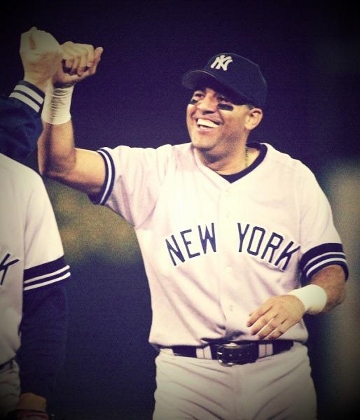
When you think of the late 1990’s New York Yankees dynasty and the four World Series championships they won together, you probably think of names like
Derek Jeter, Mariano Rivera, Bernie Williams, and Paul O’Neill. This makes sense of course, because they were the key players and superstars that provided
the huge moments that propelled the Yankees into their most recent dynasty. However, while it is easy to forget a player like Luis Sojo, a utility
infielder with sure hands and an affinity for big clutch hits, the fact remains that while every good team has superstars, there are many role-players on
every roster than can make or break a team.
Role-players often aren’t flashy. They don’t blow you away with jaw-dropping plays, or put the game on their back and run away with it. The currency they
operate with is not limitless talent, but rather a combination of grit, heart, and determination. It is these qualities that serve as the glue that holds a
team together; it is not very often you see a championship team that does not have a great supporting cast.
This is Avian Changeling.
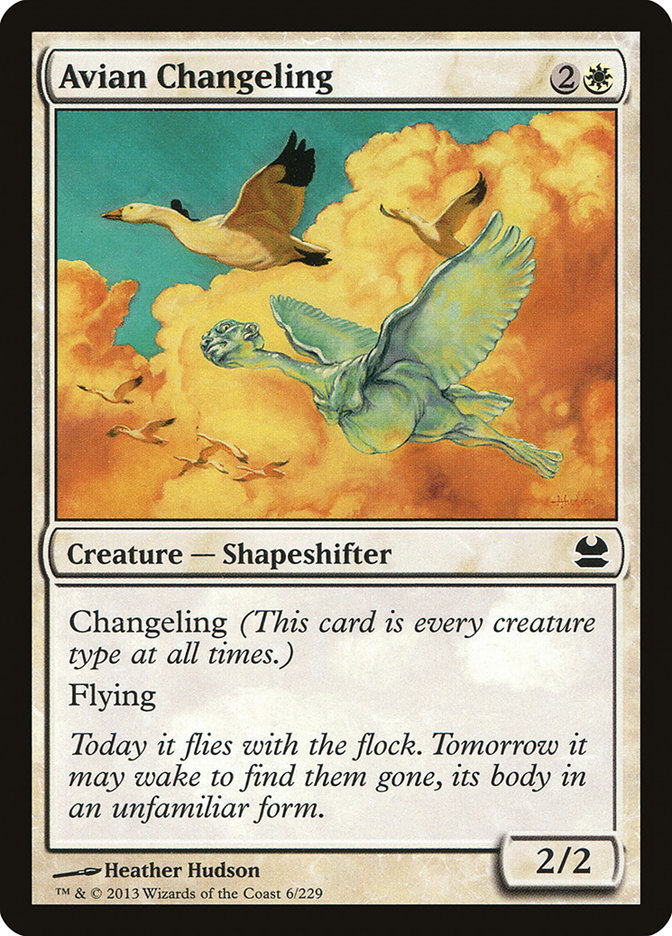
Avian Changeling is an ideal role-player.
As pretty much anyone who has played it will attest, Modern Masters is an extremely deep and fun draft format. Falling somewhere between a Cube Draft and
some of the more fun limited environments of all time (Mirrodin Block, Time Spiral Block), Modern Masters draft is one of the most synergy-based draft
formats of all time, and one of the reasons for its success is the fantastic design of its role-players. Rather than being strictly linear, many of Modern
Masters’ role-players actually slot into a number of different decks and it is this flexibility that makes the format so interesting and diverse.
Today we are going to look at five Modern Masters cards that exemplify this role-player concept.
1. Avian Changeling

Avian Changeling is a very unassuming card— on the surface it is nothing more than a glorified Wind Drake. However, as anyone who has drafted Lorwyn Block
can attest, the flexibility and adaptability of the Changeling mechanic makes it extremely important in being the synergistic glue that holds your deck
together.
Most importantly, as far as Modern Masters goes, Avian Changeling is a Giant, and the cornerstone of the Red/White Giants deck. Avian Changeling gives the
Giant deck its cheapest Giant, an evasive body, and its standard opening of turn two Kithkin Greatheart, turn three Avian Changeling. It helps out your
Blind-Spot Giants and Thundercloud Shamans, and can also pick up any cross-tribe synergies you might have with any random Amrou Scouts or Tar Pitchers that
make their way into your deck.
The other main function of Avian Changeling is that it is a Rebel, and is one of the best things you can search up with your Rebel-searchers in the
black/white Rebel deck. Again it gives you the evasive body, and turns on any cross-tribe synergies with any Kithkin Greathearts or Thieving Sprites that
may have found their way into your deck.
Yet while those are the most obvious things that Avian Changeling does, from a design standpoint all the other stuff it does is what makes it a truly
wonderful design.
Maybe you’re blue/white, where it’s going to be a Faerie to help out your Scion of Oona and Spellstutter Sprites?
Maybe you’re green/white Saprolings and you will be sacrificing it to your Pallid Mycoderm?
This sort of flexibility is what gives the format so much depth, and can also be seen to a lesser extent in the formats other two changelings, War-Spike
Changeling and Mothdust Changeling.
2. Mogg War Marshal
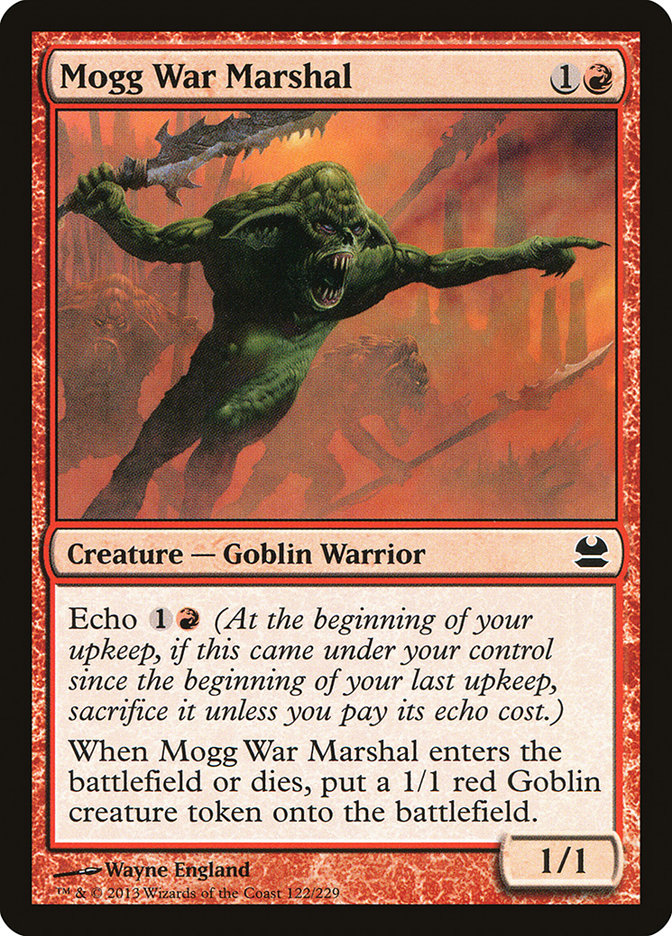
Mogg War Marshal is also a very unassuming card. It’s also a card I feel extremely qualified to talk about as I have probably cast it more times than any
other human being on the planet. On the surface, it makes a few tokens/chump blockers and that’s that. Yet in Modern Masters it finds itself as one of the
cornerstones of the red/black Goblin deck, whether it’s being sacrificed to Tar Pitcher, Marsh Flitter, or Facevaulter, or getting pumped up by Mad Auntie.
In a pinch you can even Warren Weirding yourself to get a nice little army out of the deal.
I’ve also had great success with the card in my blue/red Storm decks, both as an early blocker to buy me all the time I need to set up and as a complement
to my Empty the Warrens to finish the game with. It’s also a great card to sacrifice to Perilous Research.
It can also be a nice early play for your red/white Giants deck to buy some time with, or be used for the same purpose in a Five-Color Green deck (that
might even top off with Tromp the Domains).
One last note, don’t be afraid to pay the Echo! I’ve also probably paid Mogg War Marshall’s Echo cost more times than anyone on the planet; if you think
you are in for a long grindy game, or you have no other solid turn three play beyond what your draw step might yield, don’t be afraid to pay that Echo!
3. Bonesplitter
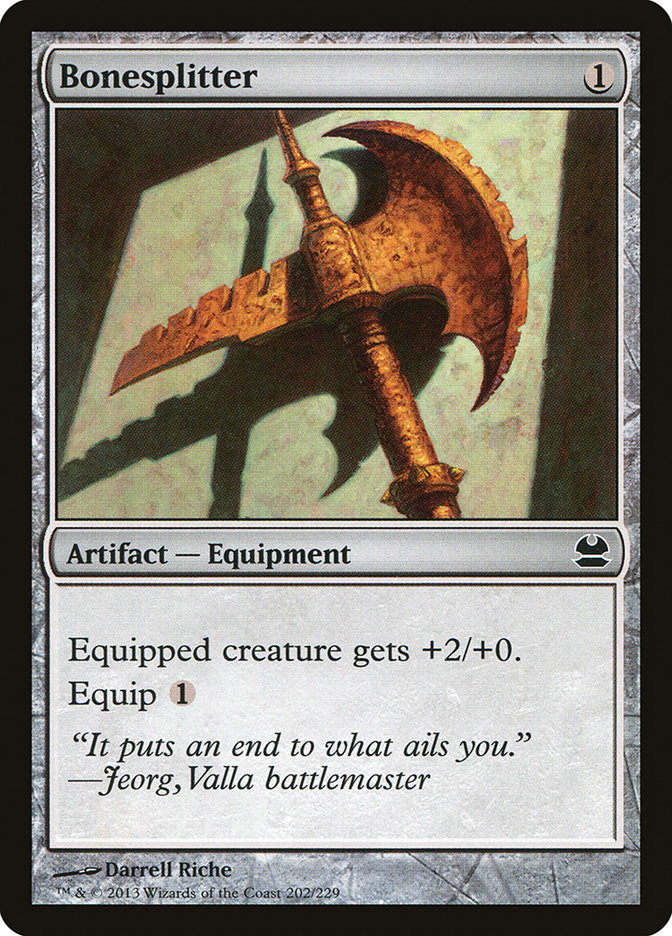
This card is a little more obvious than the last few, as it is clearly an early pick that many different kinds of decks would want. However, the effect it
has on some of the specific archetypes is very prominent and does a great job at shoring up weaknesses.
Of course this card’s best role is in the Affinity deck, where you have a bunch of small artifact beaters and are looking for as many good cheap artifacts
as you can find. Bonesplitter is at its absolute best in this deck, and is one of the cards you want above all others. This is the obvious application, but
it has a number of implications in other decks as well.
It is also very good in the tribal decks that rely on a lot of small cheap creatures to get the job done, as it can give them the power boost they need to
push through. Bonesplitter goes great on a Thieving Sprite or Spellstutter Sprite in blue/black Faeries, on any small goblin in black/red Goblins, and
helps to provide the attack power that many of the creatures in black/white Rebels lack.
What’s also exciting about this card from a design standpoint is that although it is an artifact and playable in any deck, there are definitely decks that
are not interested in the effect. Red/white Giants, red/green Dinosaurs, and Five-Color Green aren’t really interested in the effect, and it is basically
unplayable in the red/blue spell-based decks.
4. Executioner’s Capsule/Pyrite Spellbomb
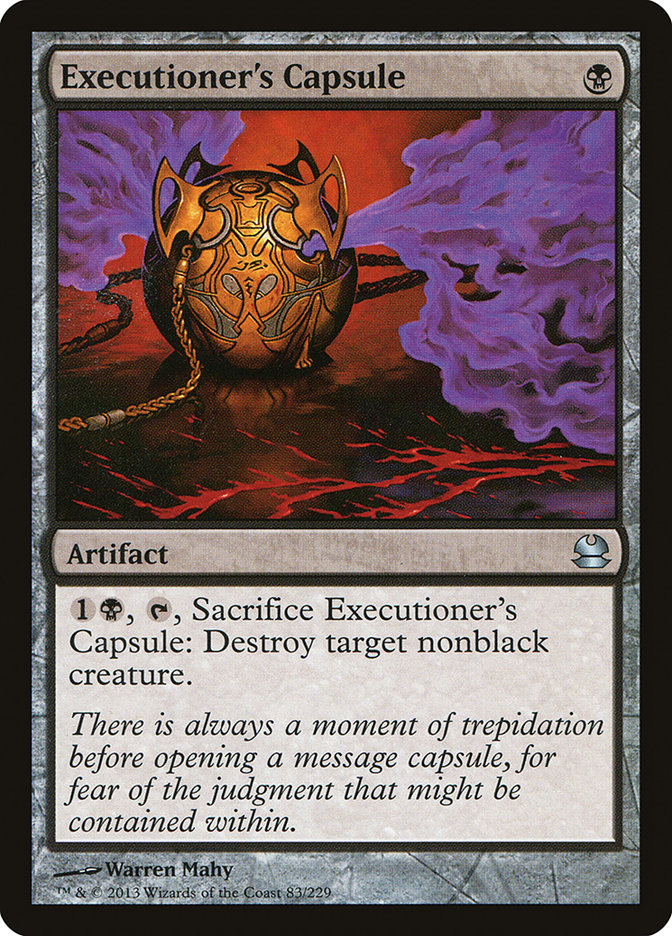
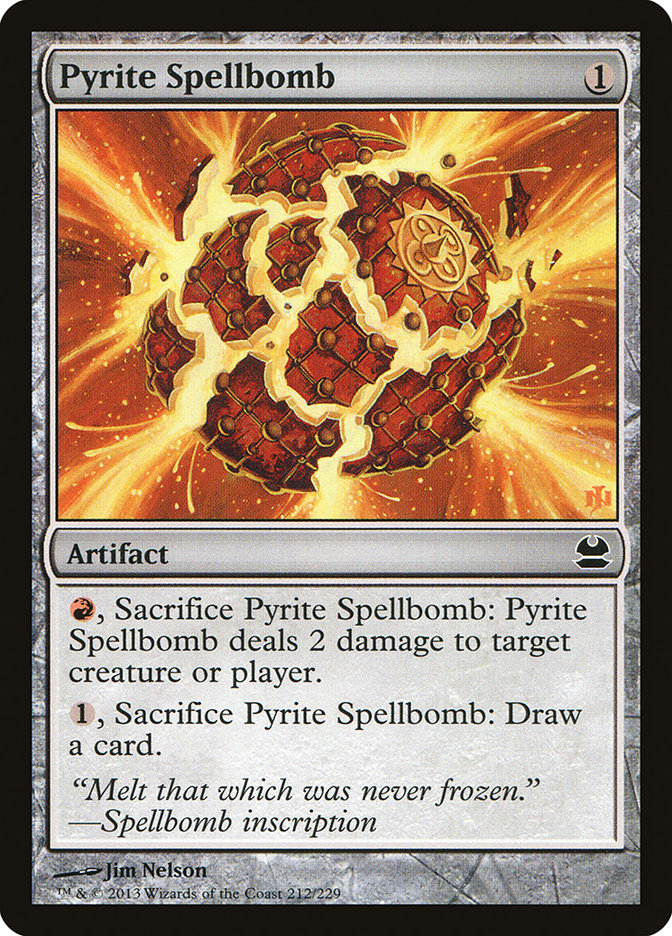
I’m cheating a little by including both of these cards under the same heading, but their effects similar enough that pretty much everything that can be
said about one can be said about the other. Of course these are both solid removal spells and many different decks would want them, but let’s look at how
they interact with the different decks.
Executioner’s Capsule is fantastic in the blue/black Faerie decks, as once cast it can sit in play to be used at instant speed whenever you need it,
letting you leave your mana open for your instant speed Faeries.
Pyrite Spellbomb is great in the blue/red Storm decks, as it is not only a good removal spell, it is also a cheap cantrip which you can use to help raise
your spell count.
Most interesting of all these interactions however is what these cards do to the ‘standard’ Affinity deck. Most of the Affinity cards are blue and white,
so you would assume that most Affinity decks would be blue/white decks. However, by including cards like these two in the set along with cards like
Shrapnel Blast and Tidehollow Sculler, they encourage you to deviate from the proposed linear plan laid out for the format. Maybe blue dries up, but you
are able to draft a black/white Affinity deck with two Tidehollow Scullers, an Executioner’s Capsule, and a Slaughter Pact.
Again we see the importance of flexibility and of cards that are able to fulfill multiple roles for multiple decks. I often have the most fun drafting when
I am able to put together a non-standard collection of synergistic cards and make it all work, like black/white Affinity for example, or maybe a blue/red
Faerie deck with multiple Mothdust Changelings and Spellstutter Sprites alongside the Arcane spells.
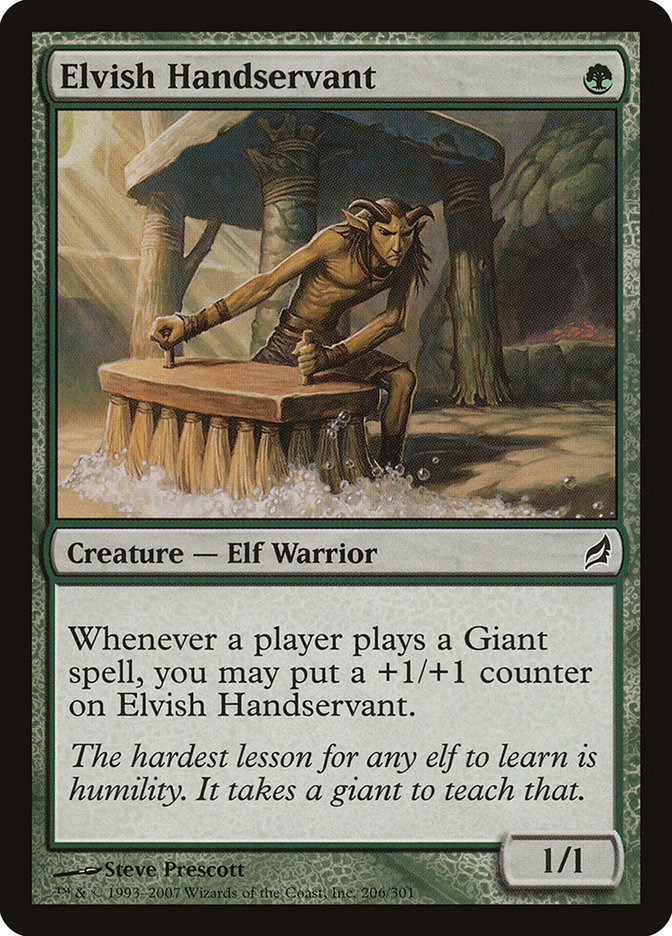
A great example of this is the card Elvish Handservant from Lorywn. One of my favorite decks in that format was green/red Giants, which would open its
games with Elvish Handservant into Woodland Changeling into whatever other Giants I saw fit.
5. Flickerwisp
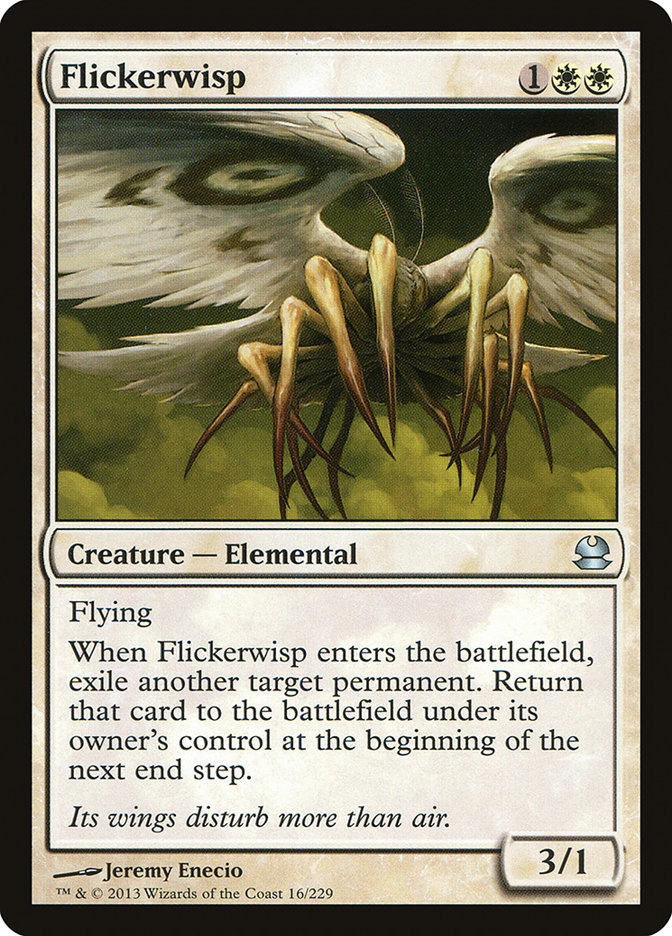
Flickerwisp is a really cool card. As a three-power flier for three mana, its power level is just right and the enters-the-battlefield ability is extremely
versatile and flexible. Of course its main purpose is to profitably blink things, and there are plenty of targets in the set, from Mulldrifter to Cloudgoat
Ranger. Along with Otherworldly Journey it provides a nice mini-Blink sub-theme which can be explored when the time is right.
Aside from that, it is also just playable because of what else its ability can do. It can reset or remove counters, remove blockers, untap attackers so
they can block, kill creature tokens, and for the truly sick, it can do some nasty things with an Aether Vial on three counters.
Flickerwisp is an excellent mix between synergy and raw power, and can create some very interesting plays and situations.
Flickerwisp is a card that has been in my Cube for a very long time, where it can do even more fun stuff like reset Tangle Wire and undo the damage done by
a Control Magic.
Bonus Section: Cube Role-Players
This idea of making sure that many flexible and good role-players are available when drafting is one I’ve been using in my Cube for a few years now. While
my Cube started like most others as a collection of really good cards, I quickly discovered how much more fun it was to enable archetypes and how important
it was to find cards that could enable these archetypes without being so narrow that they were completely useless otherwise.
While in some drafts these cards may go unplayed simply because nobody has a deck that could properly utilize them, many other drafts they will be
extremely desirable role-players that will be important picks.
I also think it’s a good thing that these role-player cards will go as late picks because it means you actually need to construct your deck. When the Cube
is all good cards, you often end the draft with thirty playables and have to cut seven reasonable cards from your deck. I think this is something people
have noticed with Modern Masters drafting. Yes, that Worm Harvest often goes fourteenth, but you have so many playables that it’s not going to affect you.
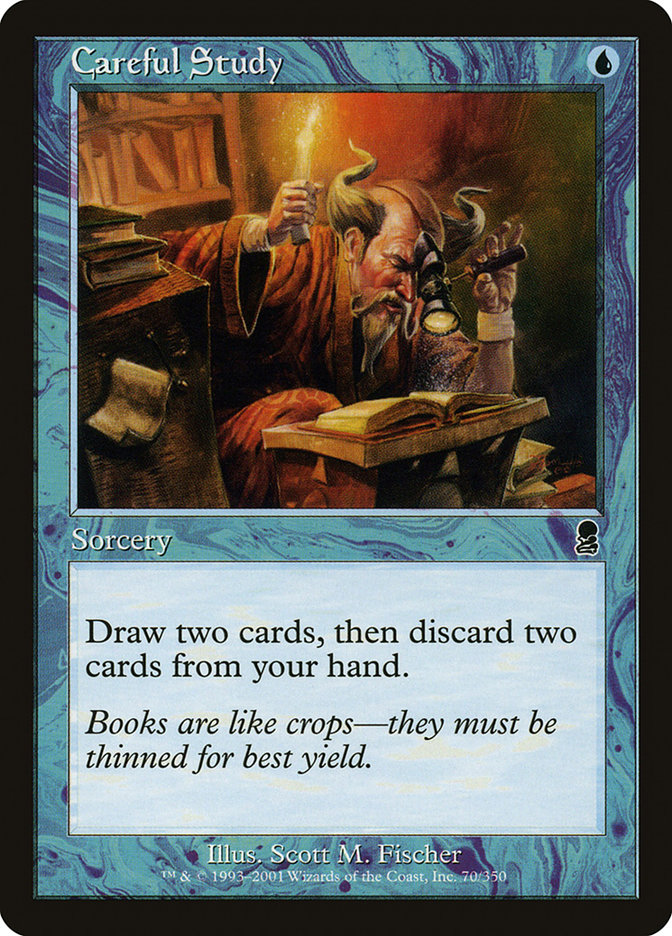
Careful Study
This is one that I am always surprised I never see in Cubes. Just like Mogg War Marshal in Modern Masters, Careful Study is of course at its best in a
Reanimator/graveyard-based deck that is going to gain value from adding cards to its graveyard.
But because it is so cheap and such a universal effect, it also can find its way into other decks as a solid role-player as well. It’s very good in Storm
decks as a cheap spell that can dig you deeper during a big combo turn, and worst-case scenario it can be used in low-curve aggressive deck to pitch extra
lands.
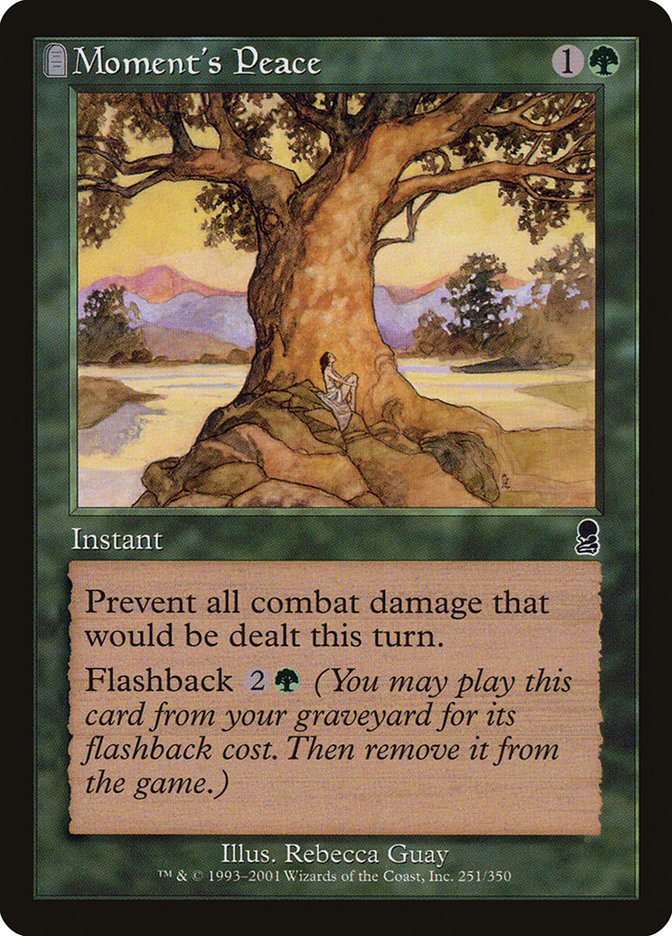
Moment’s Peace
I think this card was in the most recent version of the Magic Online Cube, which is good because if this is a card you want in your deck, it’s a card you really want in your deck. It is absolutely fantastic in combo and mana ramp decks as a double Time Walk against aggressive decks, and is one of
the best defensive measures you could have.
It also plays very nicely with graveyard cards like Gifts Ungiven.
Like Bonesplitter, there are certainly many decks that won’t want Moment’s Peace, and that’s fine. Moment’s Peace has a job to do, has a role, and fills it
admirably.
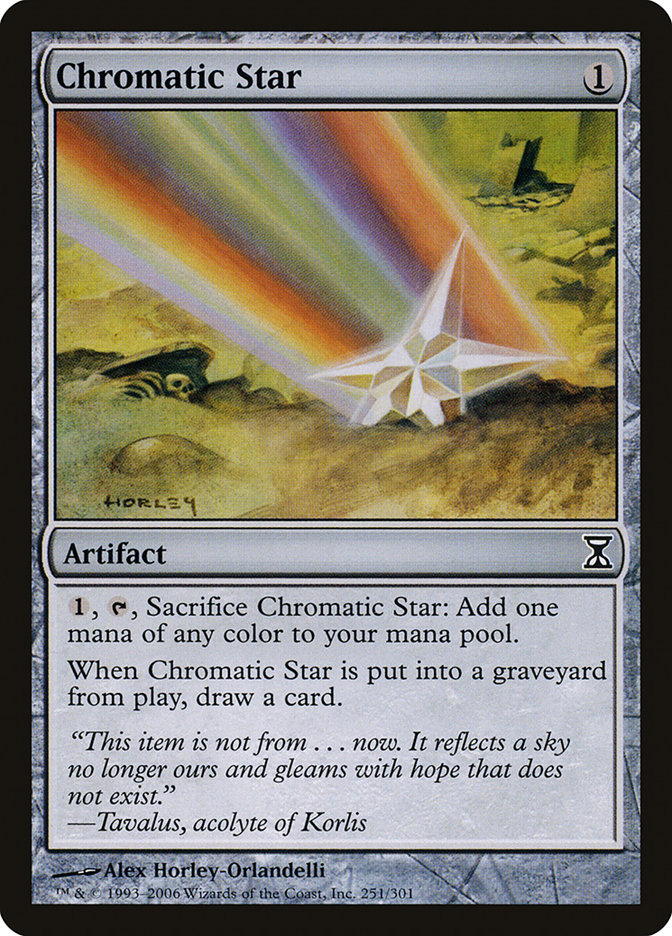
Chromatic Star
This is one of the cards that gets the most odd looks when people draft my Cube. Chromatic Star is not Derek Jeter; Chromatic Star is Luis Sojo. Then the
same person who gave the strange look will be annoyed when it doesn’t table, because quite frankly Chromatic Star fills a lot of niche roles.
It doesn’t look like much, but Chromatic Star has Top 8’d quite a number of tournaments in a huge variety of decks.
The biggest things that Chromatic Star does in my Cube are to help enable my artifact deck and my Storm combo deck. It does both extremely admirably, as
anyone who has played old Affinity decks, Eggs decks, or Extended Storm decks can attest to.
Aside from that though it is just a perfectly reasonable card if your mana is a bit shaky, or you want to shrink your deck a little bit.
The Takeaway
Understanding how formats work goes a long way towards getting better at drafting both the specific format and drafting in general.
It is also very important when you are working on your own environment, usually in the form of a Cube. I will be doing a full Cube article at some point in
the future where I will go over the entirety of my Cube, along with my theory and explanations. Also look for the next episode of So You Think You Can Brew? coming soon!
Otherwise don’t forget, Luis Sojo has a lifetime World Series batting average of .400 and has four World Series rings. While he may never appear in a Nike
commercial, his role on those teams was undeniable.
(I highly encourage all comments and feedback. Feel free to either post in the comments of the article or message me directly on Facebook Please also feel free to follow me on Facebook, but don’t be offended if I don’t accept your friend request; I only add people I’m acquainted with in person.)
